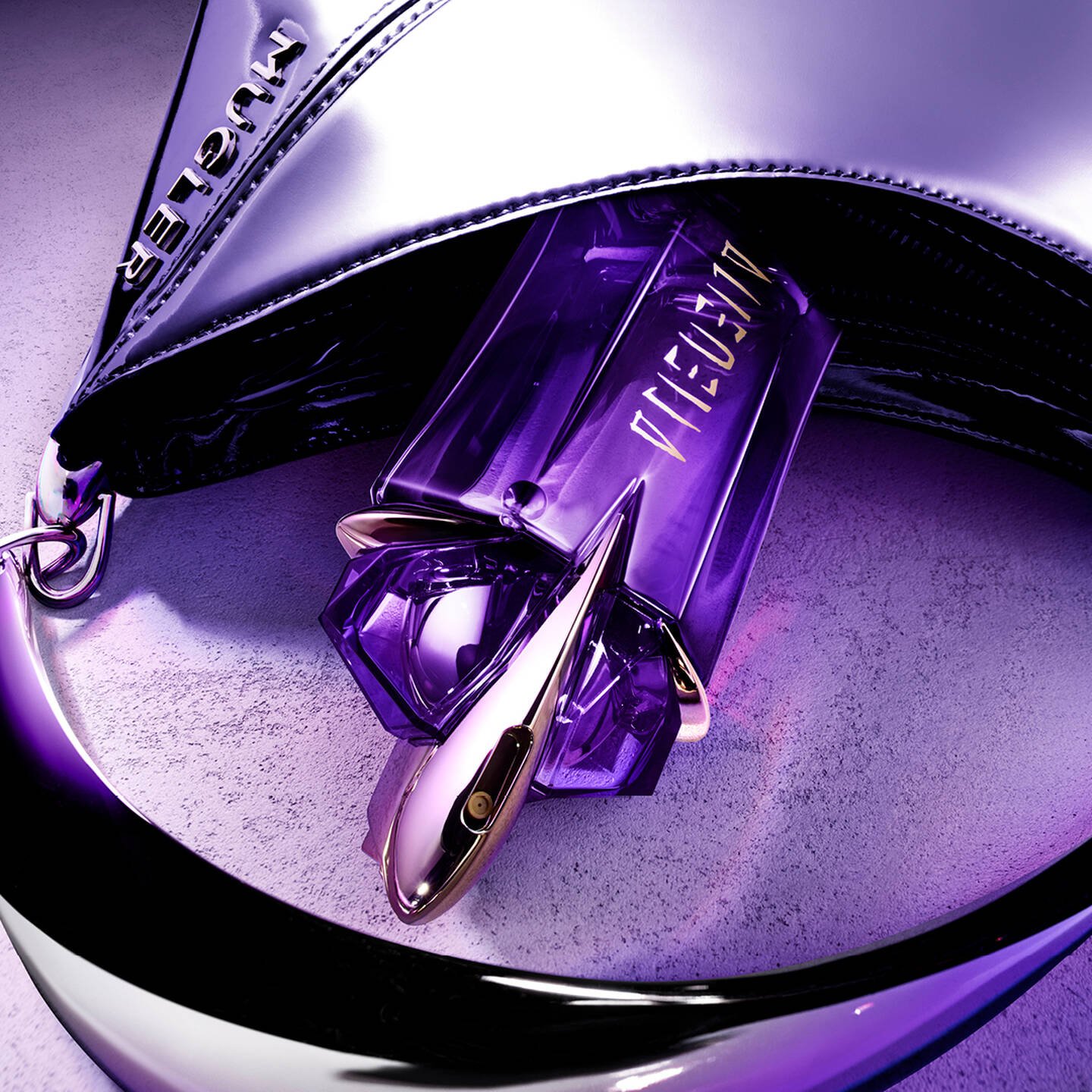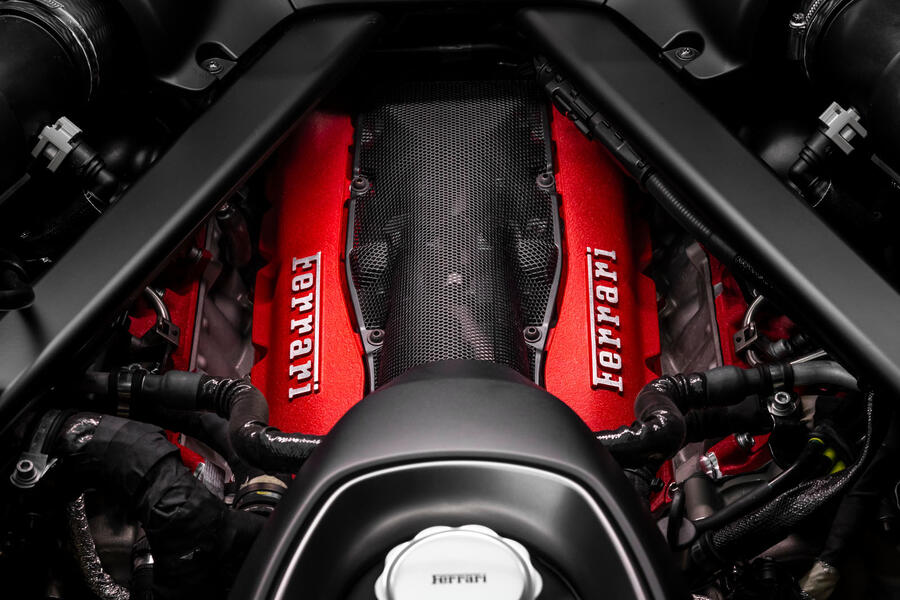In a world where travel has become a quest for unique and memorable discoveries, luxury destinations stand out for their ability to offer unforgettable experiences. Whether you’re a lover of secret beaches with crystal-clear waters or passionate about the grandiose panoramas of exceptional mountains, luxury is expressed here in all its forms. This article invites you to explore enchanting, often little-known places where refinement and natural beauty intertwine to create idyllic retreats. Far from the crowds and tourist resorts, these getaways promise total immersion in breathtaking scenery, while enjoying superior service. Get ready to discover corners of paradise where every moment becomes a precious memory, whether lounging on a secluded beach or hiking mountain trails offering spectacular views. Let yourself be seduced by the elegance of these dream destinations, where luxury rhymes with authenticity and serenity. Embark on a sensory voyage, where each destination is a promise of wonder and relaxation.
Introduction to Luxury Destinations
In a world where travel is often synonymous with crowded tourist spots, luxury destinations offer a sanctuary of exclusivity and tranquility. Imagine secret beaches lapped by azure waves, or majestic mountains that seem to touch the sky. These hidden gems promise an experience that transcends the ordinary, inviting you to explore nature’s most breathtaking panoramas in comfort and style. For those who seek the perfect blend of adventure, romance, and relaxation, luxury destinations serve as the ultimate escape.
Why Choose Luxury Destinations?
Luxury destinations provide a unique opportunity to experience the world in a way that is both authentic and refined. With an emphasis on privacy and personalized service, these locations offer an exceptional level of comfort and pleasure. Whether it’s a secluded island with pristine beaches or a mountain retreat offering unparalleled views, luxury travel ensures that every moment is tailored to your preferences.
- Exclusive Experiences: From private beaches to guided hikes in untouched landscapes, luxury destinations offer experiences that are off the beaten track.
- Top-of-the-Range Services: Enjoy the finest in accommodation, dining, and spa services, all designed to enhance your getaway.
- Privacy and Discretion: Escape the crowds and find serenity in places where tranquility is the order of the day.
Current Trends in Luxury Tourism
The landscape of luxury tourism is continually evolving, with a growing emphasis on sustainable and eco-friendly travel. Today’s discerning travelers are seeking out destinations that not only promise relaxation and comfort but also respect the environment and local culture.
- Eco-Friendly Escapes: Many luxury destinations now prioritize sustainable practices, offering eco-friendly accommodations and activities that minimize environmental impact.
- Cultural Immersion: Travelers are increasingly interested in authentic experiences that allow them to connect with the local culture, cuisine, and traditions.
- Wellness and Relaxation: The demand for wellness retreats in secluded locations is on the rise, with a focus on mental and physical rejuvenation.
For those dreaming of a romantic getaway, luxury destinations offer idyllic settings where couples can unwind and enjoy each other’s company. Imagine strolling along a secret beach at sunset or enjoying a candlelit dinner on a mountain terrace, with only the stars as your company. These destinations provide the perfect backdrop for creating unforgettable memories.
When planning your next luxury adventure, consider the logistics to ensure a seamless experience. Research the best means of transport, understand visa requirements, and consult with specialist travel agencies that can offer expert advice. With careful planning, your journey to these extraordinary places will be as effortless as the relaxation and enjoyment that awaits you.
Secret Beaches to Discover
The Secluded Beaches of the Maldives
Renowned for their surreal beauty, the Maldives offer an array of secret beaches that provide the ultimate luxury escape. These secluded paradises are perfect for those seeking a private getaway surrounded by crystal-clear waters and pristine sands. The Maldives’ exclusive beaches are nestled on private islands, ensuring a unique and tranquil experience for visitors.
For those planning a visit, the ideal time to experience the Maldives’ secret beaches is between November and April, when the climate is at its most pleasant. Luxury accommodations, ranging from over-water villas to beachside bungalows, offer top-of-the-range services that include private pools, personalized butler services, and world-class spa treatments.
Travelers can reach these hidden gems via private seaplane transfers, adding an element of adventure to the journey. The Maldivian islands are also known for their commitment to eco-friendly practices, making them an attractive option for environmentally conscious travelers.
The Hidden Treasures of the Greek Islands
The Greek islands boast some of the most enchanting secret beaches, where visitors can immerse themselves in authentic culture and breathtaking nature. These lesser-known beaches offer a perfect blend of relaxation and exploration, providing a unique opportunity to experience the islands away from the usual tourist crowds.
Among the Greek islands, Antipaxos is a hidden jewel with its secluded beaches, offering privacy and tranquillity. The island’s turquoise waters and white sandy shores are ideal for romantic getaways. Another must-visit is the island of Ikaria, known for its untouched beaches and captivating views. Here, visitors can enjoy hiking adventures that lead to hidden coves and panoramic vistas.
Luxury accommodations on these islands offer a refined blend of traditional Greek elegance and modern comforts. Visitors can indulge in authentic Greek gastronomy and personalized services that ensure a memorable stay. The best time to explore these hidden treasures is during the late spring and early autumn, when the weather is pleasantly warm, and the islands are less crowded.
Little-Known Beaches in the Caribbean
The Caribbean is home to some of the world’s most picturesque secret beaches, offering an exclusive hideaway for those seeking serenity and romance. These little-known beaches are scattered across various islands, each providing a unique and private experience.
In the Caribbean, the island of Dominica stands out with its unspoiled beaches surrounded by lush mountains, offering an exceptional fusion of beach and mountain scenery. Another hidden gem is the beach of Anse Chastanet in Saint Lucia, where visitors can enjoy the perfect blend of sea and sun against the backdrop of the majestic Pitons.
To reach these secluded Caribbean beaches, travelers can rely on specialized travel agencies that offer tailored packages, ensuring ease and comfort throughout the journey. Luxury villas and resorts on these islands provide unparalleled service, including private beach access, gourmet dining experiences, and rejuvenating spa treatments.
The Caribbean’s secret beaches are best visited during the dry season, from December to April, offering ideal conditions for relaxation and romantic escapes. With their unique charm and exceptional beauty, these beaches promise an unforgettable experience for those in search of hidden paradises.
Exceptional Mountains to Explore
The Alps and Their Breathtaking Scenery
Nestled in the heart of Europe, the Alps offer an unparalleled blend of luxury and nature, making them a perfect destination for those seeking an exclusive and unforgettable escape. Known for their majestic peaks and snow-capped panoramas, the Alps provide a picturesque backdrop for a variety of activities. Luxury travelers can indulge in top-of-the-range services, from private guided hiking tours to eco-friendly skiing adventures.
The enchanting mountain villages scattered throughout the region offer a unique cultural experience. Guests can revel in the authentic charm of Swiss chalets or experience the elegance of five-star resorts, each promising comfort and discretion. For a romantic getaway, consider visiting during the serene summer months when the valleys bloom, offering a tranquil escape far from the bustling ski crowds. The mild climate during this period is ideal for outdoor adventures and relaxation in nature.
Luxury Hiking in the Andes
Stretching across South America, the Andes are a paradise for those seeking a blend of adventure and luxury. This mountain range, with its exception of soaring peaks and hidden valleys, provides endless opportunities for exploration. The Andes are particularly famous for their luxury hiking trails, where travelers can embark on private guided tours that offer both physical challenge and spectacular views.
Luxury accommodations abound, with many lodges and villas offering spa services and gourmet dining experiences that highlight the rich gastronomy of the region. For a truly unique experience, consider a stay at an eco-friendly retreat, where you can enjoy the natural beauty of the Andes while minimizing your environmental footprint. The best time to visit is during the dry season, from May to October, when the weather is perfect for hiking and the views are crystal clear.
The Magnificent Panoramas of the Rockies
The Rocky Mountains, stretching from Canada to the United States, offer some of the most magnificent panoramas and luxury experiences for travelers seeking serenity and elegance. With their rugged landscapes and alpine lakes, the Rockies provide a perfect setting for relaxation and exploration. The region is renowned for its luxury resorts and private cabins, offering exclusive services such as personal chefs and tailored outdoor activities.
Visitors can immerse themselves in the natural beauty of the Rockies by exploring hidden trails, enjoying spa treatments with mountain views, or engaging in thrilling adventures such as horseback riding and fly-fishing. The Rockies are a year-round destination, with each season offering its own unique pleasures. Summer is ideal for hiking and exploring the lush trails, while winter transforms the area into a snowy wonderland perfect for skiing and cozy fireside evenings.
Whether you’re seeking a romantic hideaway or an adventurous exploration, these exceptional mountains offer luxury and refinement in equal measure. With their perfect blend of privacy, comfort, and natural beauty, the Alps, Andes, and Rockies promise an unforgettable escape into the heart of nature.
Exclusive Seaside Activities
Spa and Wellness Breaks
In the realm of luxury destinations, secret beaches serve not only as perfect hideaways but also as sanctuaries for relaxation and rejuvenation. Imagine indulging in a spa experience with the soothing sound of waves as your backdrop. Many exclusive seaside resorts offer top-of-the-range spa services that blend traditional techniques with local, natural ingredients. Whether it’s a couple’s massage overlooking the ocean or a private yoga session on a secluded beach, these experiences promise unrivaled tranquility and relaxation.
Top-of-the-Range Water Sports
For those seeking adventure and exploration, secret beaches offer a playground of top-of-the-range water sports. From private snorkeling trips exploring vibrant coral reefs to windsurfing across pristine waters, the options are endless. These exclusive experiences are often tailored to ensure privacy and personalized service, allowing guests to enjoy the pleasures of the sea with ease and comfort. Additionally, eco-friendly practices are often employed, ensuring that these adventures are as kind to nature as they are exhilarating.
Gastronomy and Unique Culinary Experiences
The culinary experiences at these luxury destinations are as exceptional as the views. Imagine dining at an exclusive seaside restaurant where the menu is influenced by the bounty of the sea and local culture. Many resorts offer private dining experiences on the beach, where chefs prepare gourmet dishes inspired by the surroundings. This focus on gastronomy not only elevates the dining experience but also immerses guests in the authentic flavors of the region, making each meal a unique blend of local knowledge and culinary refinement.
Whether you’re seeking relaxation or adventure, these exclusive seaside activities offer a perfect blend of luxury and nature, making for an idyllic getaway that is both inspiring and unforgettable.
Mountain Breaks: Luxury and Well-being
Stays in Luxury Chalets
Imagine waking up to the tranquil sound of a mountain stream, surrounded by lush forests and awe-inspiring peaks. Luxury chalets offer the perfect hideaway for those seeking both relaxation and adventure. These exclusive accommodations provide a perfect blend of rustic charm and modern elegance, ensuring an authentic experience in nature’s paradise. With private chefs, personalized service, and top-of-the-range amenities, each chalet promises a unique escape into the mountains.
Destinations like the Swiss Alps and the French Pyrenees offer an array of luxurious chalets, boasting panoramic views and easy access to some of the world’s most prestigious ski resorts. Whether you prefer skiing, hiking, or simply unwinding in a spa, these accommodations cater to every whim and desire.
Prestigious Ski Resorts
For those who find pleasure in the thrill of winter sports, prestigious ski resorts offer an exceptional playground. Places like Aspen in the United States, Courchevel in France, and Zermatt in Switzerland are synonymous with luxury and exclusivity. These resorts combine majestic mountain scenery with world-class facilities, perfect for both seasoned skiers and beginners alike.
- Indulge in après-ski activities, from fine dining experiences to vibrant nightlife.
- Explore eco-friendly resorts that emphasize sustainability without compromising on comfort.
- Enjoy personalized services, including ski instructors and private guides to enhance your experience.
These destinations not only offer snow-covered peaks but also a rich culture and gastronomy, providing a holistic getaway that blends adventure with refinement.
Yoga Retreats in the Heart of Nature
For those seeking tranquility and well-being, yoga retreats nestled in the heart of nature offer a sanctuary for the mind and body. Imagine practicing sun salutations against a backdrop of serene mountains, where every breath is filled with the crisp, fresh air of the great outdoors. These retreats are designed for relaxation and reflection, providing a unique combination of luxury and spiritual exploration.
Destinations such as the Himalayas in India or the Dolomites in Italy provide a perfect setting for these retreats, offering a blend of cultural immersion and natural beauty. Participants can enjoy a range of activities, from guided meditation sessions to invigorating hikes, all tailored to enhance personal well-being and serenity.
- Experience the pleasures of a personalized wellness journey, with spa treatments and holistic therapies.
- Immerse in the local culture, with opportunities to explore traditional practices and local gastronomy.
- Find the perfect balance between adventure and relaxation, making it an ideal getaway for individuals and couples alike.
Embark on a journey of self-discovery and rejuvenation in these idyllic settings, where the harmony of nature and luxury provides an unparalleled escape from the everyday hustle.
Destinations Luxe : Plages Secrètes et Montagnes d’Exception
Dans un monde où le voyage est devenu une quête de découvertes uniques et mémorables, les destinations de luxe se distinguent par leur capacité à offrir des expériences inoubliables. Que vous soyez amateur de plages secrètes aux eaux cristallines ou passionné par les panoramas grandioses des montagnes d’exception, le luxe s’exprime ici sous toutes ses formes. Cet article vous invite à explorer des lieux enchanteurs, souvent méconnus, où le raffinement et la beauté naturelle s’entrelacent pour créer des retraites idylliques.
Introduction aux destinations de luxe
Les destinations de luxe ne sont pas simplement des lieux à visiter, mais des expériences à vivre. Elles offrent une combinaison parfaite de confort, d’élégance et de services personnalisés qui permettent une immersion totale dans le paradis. Que ce soit pour une escapade romantique ou une aventure exclusive, le luxe se traduit par des souvenirs impérissables.
Pourquoi choisir des destinations de luxe ?
Opter pour des destinations de luxe, c’est choisir la tranquillité, la beauté naturelle et l’authenticité. Ces lieux offrent une évasion loin des foules, permettant de se ressourcer en toute discrétion. C’est une invitation à profiter de chaque instant dans un cadre idyllique, avec des services haut de gamme qui garantissent une expérience sans pareille.
Les tendances actuelles du tourisme de luxe
Le tourisme de luxe évolue vers une quête d’expériences authentiques et écoresponsables. Les voyageurs recherchent des destinations qui combinent confort et respect de l’environnement, tout en offrant des activités culturelles et de bien-être exclusives.
Plages Secrètes à Découvrir
Les plages isolées des Maldives
Les Maldives abritent des plages secrètes où le sable blanc rencontre une mer turquoise. Ces îles paradisiaques sont idéales pour une escapade romantique, offrant des villas privées et des services de spa de luxe.
Les trésors cachés des îles grecques
Les îles grecques renferment des trésors cachés tels que des criques isolées et des plages aux paysages préservés. Profitez de la gastronomie locale et de la culture authentique dans un cadre idyllique.
Les plages méconnues des Caraïbes
Les Caraïbes offrent des plages méconnues où règnent tranquillité et beauté naturelle. Ces plages sont parfaites pour se détendre et profiter d’activités nautiques exclusives telles que la plongée en apnée.
Montagnes d’Exception à Explorer
Les Alpes et leurs paysages époustouflants
Les Alpes sont synonymes de paysages à couper le souffle et d’aventures en plein air. Profitez des stations de ski prestigieuses et des randonnées de luxe pour explorer ces montagnes majestueuses.
Les randonnées de luxe dans les Andes
Les Andes offrent des panoramas spectaculaires et des possibilités de trekking exclusives. Explorez ces montagnes lors de circuits organisés pour découvrir des vues imprenables et une culture riche.
Les magnifiques panoramas des Rocheuses
Les Rocheuses, avec leurs paysages impressionnants, sont idéales pour des escapades en nature. Découvrez des retraites de yoga en plein air et des séjours dans des chalets de luxe pour une détente totale.
Conclusion
Choisir des destinations de luxe, c’est s’offrir une expérience unique où chaque moment devient un souvenir inoubliable. Que vous soyez attiré par les plages secrètes des Maldives ou les majestueuses montagnes des Alpes, ces lieux cachés sont une invitation à l’évasion et à la relaxation. En combinant confort, élégance et services personnalisés, ces destinations vous promettent une immersion totale dans des paysages de rêve, alliant luxe et authenticité. Préparez-vous à vivre des aventures inoubliables, où le voyage devient une véritable quête de sérénité et de plaisir.
Q: What are the best secret beaches to discover?
A: The best secret beaches include Navagio beach in Zakynthos, Kuta beach in Bali and Whitehaven beach in Australia. These destinations, which are often less frequented, offer unspoilt landscapes and unrivalled tranquillity. You can enjoy breathtaking scenery, turquoise waters and an idyllic setting, far from the crowds. These beaches are perfect for a romantic getaway or for recharging your batteries in the heart of nature.
Q: How do I get to the exceptional mountains?
A: Getting to the exceptional mountains of the Himalayas and Andes requires careful planning. There are several options open to you: guided treks, organised tours or personalised expeditions. It is essential to choose an itinerary that is suited to your skill level and physical condition. What’s more, good logistical preparation, including accommodation and transport, is crucial if you are to enjoy these majestic landscapes to the full while guaranteeing your safety.
Q: When is the best time to visit these destinations?
A: The best time to visit the secret beaches and exceptional mountains varies according to the destination. For the beaches, summer is the best time to enjoy the sun and pleasant temperatures. For the mountains, spring and autumn offer ideal conditions for hiking, with breathtaking scenery and mild weather. It’s important to check the specific climatic conditions of each location before planning your trip to maximise your experience.
Q: What are the best things to do at these locations?
R: On these secret beaches, relax, snorkel or kayak to explore the seabed. For the exceptional mountains, trekking, climbing or skiing are the key activities. Both destinations also offer the opportunity to observe the local flora and fauna, as well as discovering the surrounding culture. By incorporating a variety of activities, you’ll maximise your experience and create unforgettable memories during your trip.
Q: What are your tips for a successful luxury trip?
A: For a successful luxury trip, opt for top-of-the-range accommodation, such as private villas or exclusive resorts. Opt for personalised services, such as private chefs or experienced guides. Plan your trips using comfortable means of transport, such as private jets or chauffeur-driven cars. Finally, don’t overlook unique experiences, such as private excursions or gourmet dinners, to make your stay even more memorable.








































